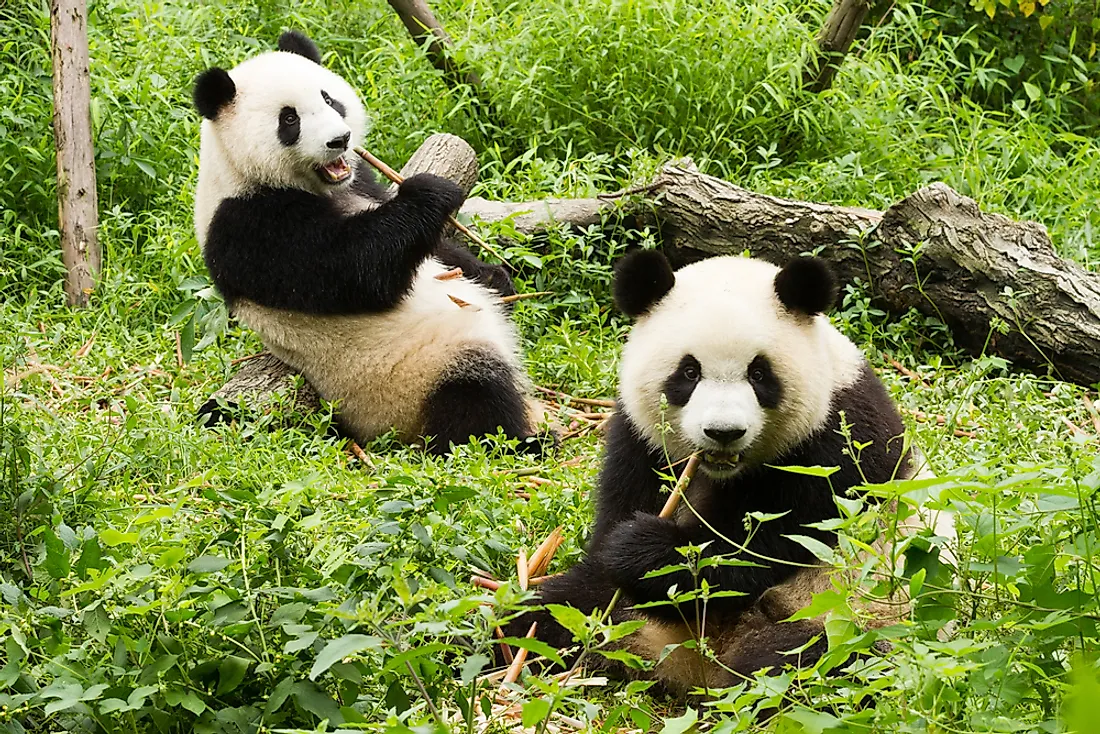What Do Giant Pandas Eat?

Giant pandas are native to southwestern and central regions of China. These large black and white mammals, whose name in Chinese translates to “big bear cat”, have become well known as furry ambassadors for global efforts aimed at preserving endangered species as well as symbols for the importance of wildlife conservation and preservation throughout the world. Giant pandas are considered a vulnerable species by the IUCN and the Chinese government as stepped up giant panda conservation. Despite being members of the Carnivora order of animals, giant pandas feed on a diet consisting predominantly of plants, in particular bamboo. Most Carnivoran creatures (or carnivores) are meat eaters who use their sharp claws and teeth to catch prey. Giant pandas, however, are primarily herbivorous although their diet can also include small quantities of eggs, fish, insects, and even small rodents.
Diet of the Giant Panda
The giant panda is a species of bear and therefore classified as a carnivore. It has the digestive system and canine teeth of a meat eater even though it has evolved over millions of years to primarily consume bamboo. Ancestors of modern giant pandas were carnivores and there are a number of theories as to why the species switched to a plant based diet. Many experts believe that this drastic dietary change was brought about by a combination of environmental and genetic factors. It is thought that approximately seven million years ago the animals which the giant pandas had depended upon for nourishment died off and disappeared due to changes in the natural habitat. Because of this shortage of prey, giant pandas then adapted to a new diet and lost their taste for meat. The animals are believed to have switched to an exclusively bamboo based diet about two million years ago.
Research has shown that several of the physical characteristics of modern giant pandas evolved due to the drastic changes in their diet. One example of this is the rounded shape of the animal’s face which resulted from the development of the powerful muscles in its jaw. Giant pandas also employ their large molar teeth to chew and grind up the fibrous material which makes up bamboo.
Bamboo Consumption
Because they subsist on a herbivorous diet giant pandas primarily feed on plants, a vast majority of which (up to 99%) is made up of bamboo. Giant pandas consume a variety of species of bamboo and feed not only on this plant’s leaves but also its stems, roots, and shoots. Due to the fact that bamboo is a poor source of the nutrients needed for giant pandas to survive they must consume large amounts of the plant material every day. On average the animals eat between 26.5 and 84 pounds of bamboo per day.
Around twenty types of bamboo are eaten by giant pandas. These include varieties such as black, water, and arrow bamboo. The animals may consume different parts of the bamboo plant depending upon the season and what’s available to them in their native habitat. During the winter months they must feed on bamboo roots, in the spring and summer seasons shoots become more plentiful, and in the fall bamboo leaves are abundant.
Other Plants and Animals
Besides bamboo, other types of plants eaten by giant pandas include vines, grasses, green corn, flowers, and honey. Captive pandas are also fed foods such as apples and steamed corn bread. In their native habitat, wild giant pandas are also known to eat small rodents as well as pikas which are small mammals related to rabbits.











